In Steven Spielberg’s 2002 movie Minority Report, futuristic technologies help the police analyze people’s intentions, prevent crimes, and arrest criminals before committing an offense. What if this scenario is not impossible, and we are moving towards that future at full speed by developing the Internet of Behaviors?
The Internet of Behaviors (IoB) is the practice of collecting and analyzing data from people’s online and offline actions to influence decisions, shape experiences, and guide behavior. It uses data like facial recognition, location tracking, social media sentiment, and more. By 2032, the global IoB market is expected to be worth around $811B.
So what is the Internet of Behaviors? And will this new technology change business and impact our lives soon?
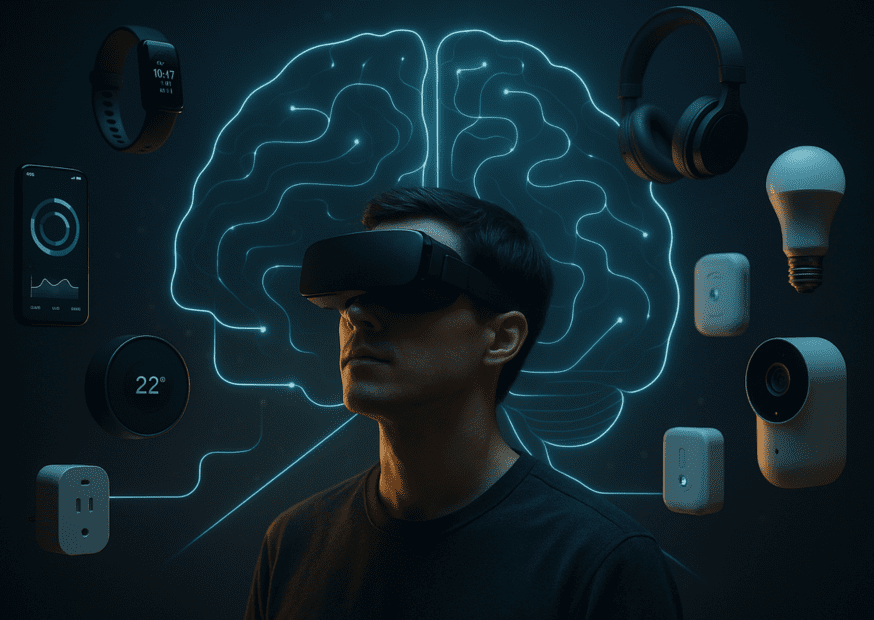
IoB (Internet of Behaviors) vs. IoT (Internet of Things)
Until relatively recently, business strategies were mostly based on the data obtained from market research. There are two types of it:
- Qualitative research represents the consumer’s reaction to the product;
- Quantitative research helps determine the market capacity, target audience, etc.
The internet has changed how businesses operate. Now, marketers and strategists use new tools to gather and analyze tons of data. This shift has brought about systems like the Internet of Things (IoT). Yet, interpreting this data is still often manual and subjective.
The next logical step in the technological evolution was a unified system that would analyze the collected data from the point of view of behavioral psychology. Behavior and technology finally met in the Internet of Behaviors (IoB).
What Is the Internet of Behaviors?
The term was coined by the University of Helsinki professor Gote Nyman in 2012. In simple words, IoB uses data from our online activities to understand and predict our actions. It’s like having a digital crystal ball that helps companies tailor their services to our needs.
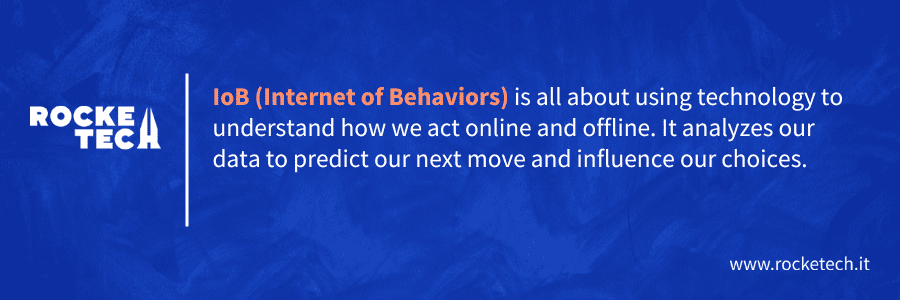
How does the Internet of Behaviors work? The concept of IoB combines many sources of so-called “digital dust” — individual data reflecting people’s activity. These sources include:
- Personal devices (smartphones, smartwatches);
- Microchip implants (health monitors for checking temperature, blood pressure, and sugar level);
- Recognition systems (face and voice recognition, location tracking);
- Social media activity.
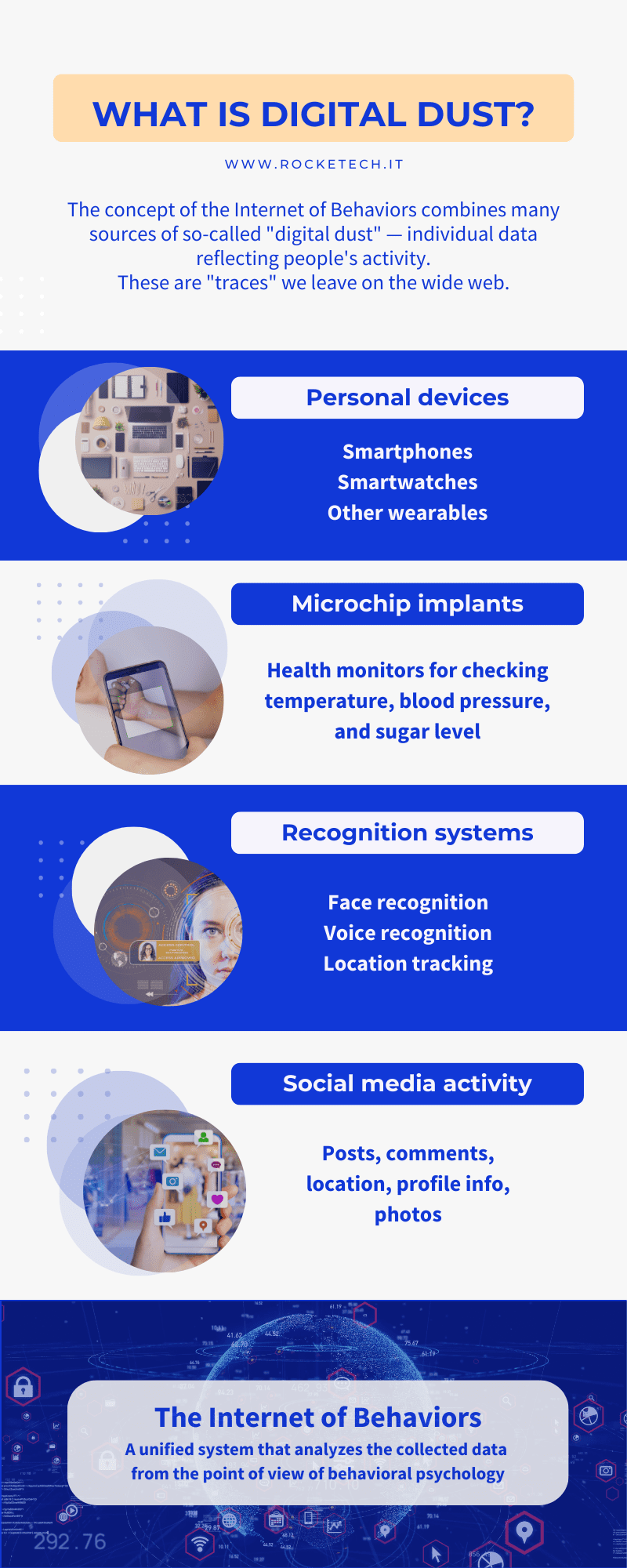
Have you ever noticed how paid ads in your Facebook feed change depending on what you’ve searched on Google? That is the real-life experience of how the Internet of Behaviors works.
Imagine a pyramid with four levels. IoT would take the pyramid base with Data and Information. Having Knowledge as the next level, IoB would rest Wisdom on the pyramid’s top.
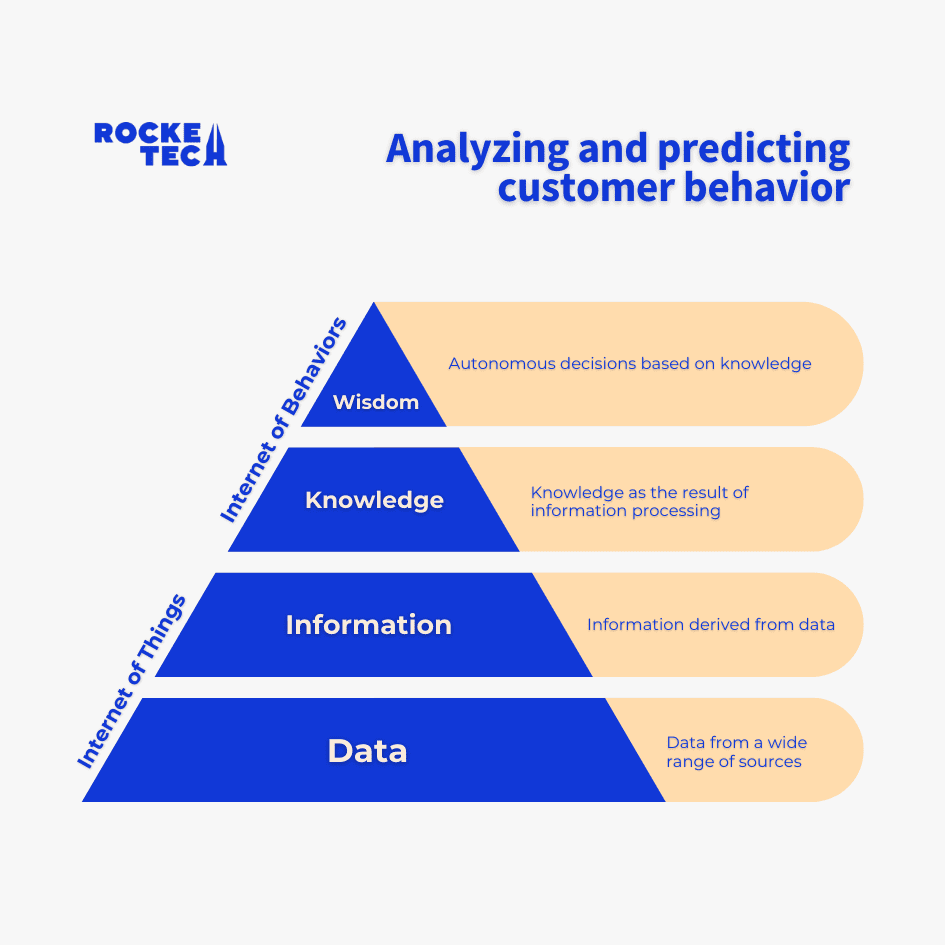
The Internet of Behaviors Examples
The IoB technology integrates big data processing, facial recognition, and location analysis technologies that have long been applied separately. But in this approach, a human body essentially becomes a data platform.
If the Internet of Things connects all the devices in an ecosystem, the Internet of Behaviors metaphorically creates a global network of living people.
Here’s how the tech already works in real life.
The Internet of Behaviors metaphorically creates a global network of living people.
IoB and Digital Advertising
IoB is transforming digital advertising by using data to tailor content to individual behaviors. unprecedented levels of personalization and targeting. By leveraging data from various sources, IoB allows advertisers to craft highly relevant and engaging campaigns that resonate with individual consumer behaviors and preferences.
| Relevant: Traditional vs. digital advertising: Which one wins? GoodFirms’ research based on real-life business insights (from us as well) breaks it down, helping you choose the best strategy. |
1. Personalized Advertising
IoB leverages data from various sources like IoT devices, social media, and online activities to understand consumer behavior. This data allows advertisers to create highly personalized ads that resonate with individual preferences and behaviors, increasing engagement and conversion rates.
2. Behavioral Targeting
By analyzing behavioral data, advertisers can target users based on their specific actions and interests. For example, if a user frequently searches for fitness-related content, they can be targeted with ads for gym memberships or health supplements. This ensures that ads are relevant and timely, improving the chances of a positive response.
3. Enhanced Customer Insights
IoB provides deep insights into customer preferences and behaviors, enabling advertisers to refine their strategies. Understanding what drives consumer decisions helps in crafting more effective ad campaigns that align with audience needs and desires.
4. Real-Time Adjustments
With IoB, advertisers can monitor and analyze real-time data to adjust their campaigns on the fly. If an ad isn’t performing well, they can quickly tweak it to better match the audience’s current behavior and preferences.
Smart Human Resources Management
Technologies analyzing employee communication within enterprise internal systems already exist. They help executives and HR departments identify formal and informal leaders who can become successful managers.
In a multi-thousand-employee environment, such tools become vital for maximum-efficiency resource management. Besides, they make it possible to automate the trajectory of an employee’s professional development.
Improved Logistics
Already today, transportation companies use all sorts of sensors and IoB applications to track their drivers’ direction, speed, breaking patterns, and safety belt position. Advanced algorithms based on big data analysis plan optimal routes according to real-time traffic updates to reduce the number of left turns or the idling time at traffic lights.
Using this approach, UP reduced the idling time by 15.4 million minutes (that is more than 28 years!) and delivery routes by more than 1.7 million miles (that is almost 200,000 gallons of fuel) in one year.
Let’s discuss your business idea.
Medicine of the Future
Wi-Fi-controlled pacemakers, smart lenses with AR integrations, smart electronic pills, Bluetooth-connected hearing aids, fertility trackers, and brain-computer interfaces helping people with neuromuscular disorders — although human augmentation still sounds like a sci-fi narrative, these devices are not that far from us.
Many sleep and fitness tracking apps already use algorithms based on behavior analytics. Such software generates personalized health advice according to the user’s preferences, routines, and collected data.
In addition, we are close to the moment when doctors can receive patients’ medical data in real time, regardless of the location. It will enable thousands of options for remote and more objective treatment.
Enhanced Customer Experience
As business becomes more and more consumer-centric, customers become spoiled. Potential buyers will leave the web page if it takes longer than a few seconds to load. Existing customers will easily switch companies if they once had a somewhat unpleasant experience with their existing supplier.
Ultimately, any business tries to provide a better customer experience (CX). How can IoB improve customer experience? There are several directions to consider.
- Maximal Personalization
Personalization is a key to service effectiveness. People like to feel special and be heard. For example, Spotify became extremely popular due to its Discover Weekly feature. The algorithm analyzes the music you listened to in the past and creates a personalized suggestion playlist. Plus, it tracks your reaction to the suggested tracks and adjusts the playlist if you skip some songs.
- Precise Suggestions
Precise suggestions are personalization’s most important part. Like Spotify and its personalized playlists, Facebook, Netflix, and YouTube actively use machine learning predictive algorithms to provide us with suggestions. In the future, these services might know if you are in a bad mood to cheer you up or help you overcome a painful breakup.
- Flawless Business-Customer Interaction
IoB inevitably will become an integral part of CRM (customer relationship management) platforms. Advanced customer data analytics will help businesses provide the highest-level service and instantaneous support.
- Advanced On-Demand Services
Uber is a great example. The company uses IoT data on both drivers and passengers and collects feedback. Soon, there will be no need for doing surveys and rating rides manually — trained algorithms will track drivers’ behavior and passengers’ reactions and make decisions on further CX improvement.
- Ultimate Customer Satisfaction
In 2018, a Sydney-based café Bahista started using facial recognition to remember and identify their customers. The technology helps the owner “remember” his regulars and suggest perfect drinks to new guests based on age, gender, and mood.
Challenges of IoB implementation
Despite the concept’s utopian image, the global implementation of IoB has serious social implications. The key issue here is a personal data breach.
| Relevant: Why do apps keep asking for permissions? Find the answer to this question in GoodFirms’ latest research. Spoiler: 58% believe that allowing permissions on the app can compromise their data — a stark reminder of growing privacy concerns. |
On the one hand, collecting “digital dust” is a law-enforcement-effective tool for identifying criminals and preventing crime. Policymakers have already discussed whether voice assistants can be considered crime witnesses. But on the other hand, in many cases, it means a violation of data confidentiality.
Yet, according to the Security Industry Association survey, 57% of respondents were positive about including their image in the global facial recognition database for public safety. And 68% believe using such instruments can make society safer.
As our “digital dust” contains tons of sensitive data like financial information or medical records, IoB security considerations for enterprises mean implementing more advanced levels of protection.
Protecting technologies, employees, customers, and investments requires a comprehensive approach using appropriate IoT protocols and instruments. Microsoft recommends a three-pronged approach — connection, devices, and data protection:
- Secure device provisioning;
- Safe ways of connecting devices to the cloud;
- Protecting data in the cloud during storage and processing.
Another counterargument to all the benefits of the Internet of Behaviors is its legal background. As it’s yet one of the emerging technology trends, there’s no single, united legal system regulating the use of the technology and its ethical implications. Most likely, we will need to develop international legal instruments, norms, and ethical codes to avoid the disastrous consequences of technology misuse.
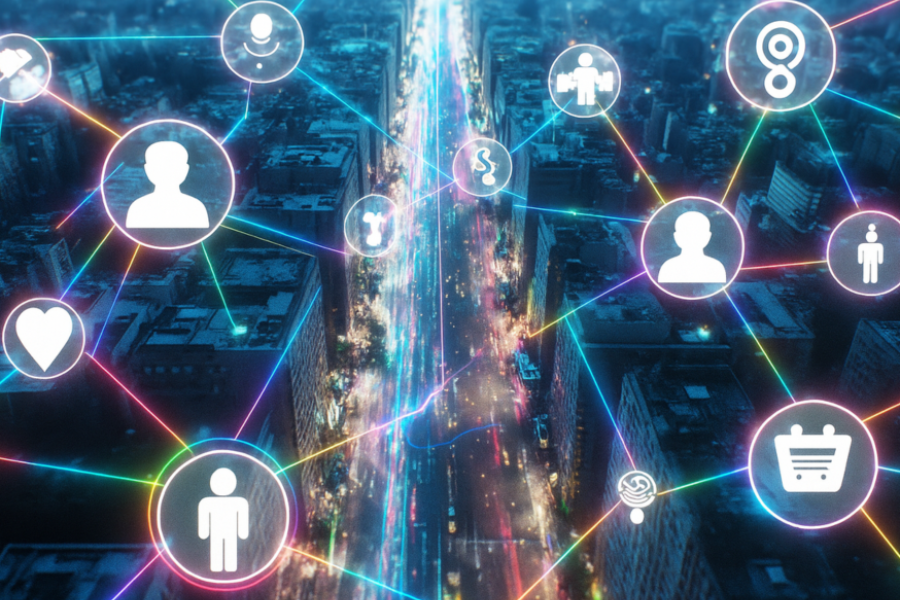
Benefits of IoB for Business
Forget “thinking outside the box” — IoB lets you ditch the box altogether. It’s about turning customer interactions, employee habits, and even machine data into actionable insights.
Imagine getting a real-time nudge when a customer abandons their online shopping cart or pinpointing inefficiencies in your assembly line based on sensor data. That’s the power of IoB.
IoB for Business Process Automation
Manual tasks are a drag on productivity. IoB can automate repetitive processes based on user behavior. For example, an insurance company can use IoB to streamline claims processing by automatically gathering data from wearables that track activity levels after an accident.
Using IoB to Gain Business Insights
Ever wondered why customers browse a certain product category but never buy? IoB can track user behavior on your website and identify patterns. This goldmine of data can help you personalize marketing campaigns and product recommendations, leading to more sales.
Custom IoB Development for Specific Needs
IoB isn’t a one-size-fits-all solution. Businesses can leverage custom IoB development to tackle unique challenges. A retail chain can use IoB sensors to track inventory movement in real-time, ensuring shelves are always stocked and preventing stockouts that frustrate customers.
Final Thoughts
The future is bright for businesses that embrace IoB. Imagine logistics with zero late deliveries, thanks to custom IoB solutions that predict traffic jams and reroute drivers. The fashion industry could use IoB to analyze buying habits and recommend outfits that are truly “in” for each customer, not just following fleeting trends.
This isn’t science fiction. With secure IoB development, businesses can build custom solutions or integrate IoB functionality into existing products or internal software. It’s about getting ahead of the curve and understanding your customers on a deeper level. The future of personalized experiences and hyper-efficiency is waiting, and IoB holds the key.